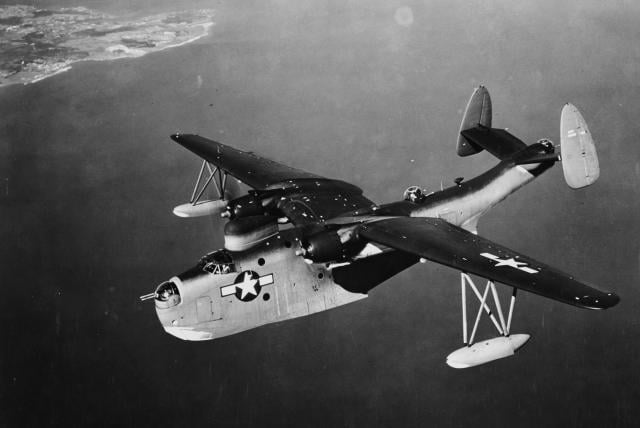At 1410 hours on 5 December 1945, a group of five TBM Avenger torpedo bombers took off from the U.S. Naval Air Station, Fort Lauderdale, Florida, for a routine overwater navigational training flight. The flight leader in charge of the unit, dubbed “Flight 19,” was U.S. Navy Lieutenant Charles Carroll Taylor, who had amassed some 2,500 flying hours in addition to the completion of a combat tour in the Pacific Theater during World War II. Taylor and his crew of 13 airmen, some trainee pilots, were to execute “navigation problem No. 1,” described by the Naval History and Heritage Command as the following:
“(1) depart 26 degrees 03 minutes north and 80 degrees 07 minutes west and fly 091 degrees (T) distance 56 miles to Hen and Chickens Shoals to conduct low level bombing, after bombing continue on course 091 degrees (T) for 67 miles, (2) fly course 346 degrees (T) distance 73 miles and (3) fly course 241 degrees (T) distance 120 miles, then returning to U. S. Naval Air Station, Fort Lauderdale, Florida.”
The weather in the area to be covered by the training flight appeared fairly standard. Save for a few scattered showers, visibility, and wind speeds were considered to be normal for a training exercise of this nature. The beginning of the exercise was just that: normal. Taylor and his crew made it easily to Hen and Chickens Shoals, where bombs were dropped according to plan sometime around 1430. At 1500 hours, a recording shows that one of the student pilots in the flight requested and was permitted to drop his plane’s last bomb.
Flight 19 turned and began to make its way toward the second leg of its exercise, and things took a turn for the strange. A radio message was intercepted from the flight at around 1600 hours, recording a conversation likely between Taylor and the pilot of one of the other planes. On the recording, one of the student pilots was asked by a crewman for a compass reading, to which the pilot replied, “I don’t know where we are. We must have gotten lost after that last turn.” On the same recording, Lieutenant Taylor can be heard saying, “Both my compasses are out, and I am trying to find Fort Lauderdale, Florida. I am over land, but it’s broken. I am sure I’m in the Keys, but I don’t know how far down and I don’t know how to get to Fort Lauderdale.” Soon after, one of the planes in the flight called in to the NAS Fort Lauderdale to report that they were lost. Operators at the NAS tried many suggestions, from switching radio frequencies to the search and rescue frequency, to imploring Taylor to turn on his YG (IFF transmitter) so that his location could be triangulated. For whatever reason, these attempts were ignored by Taylor and the other pilots of Flight 19. In one of these recordings, a member of the flight can be heard exclaiming, “Dammit, if we could just fly west we would get home; head west, dammit.” Taylor ordered the flight east.
By this time, weather conditions in the area had deteriorated, and the sun had set. A handful of land-based radio stations were able to triangulate Flight 19’s position as being somewhere north of the Bahamas and significantly off the coast of Florida. Despite this knowledge, the flight’s location was not adequately reported to naval air traffic control personnel at NAS Fort Lauderdale. At 1820, the last message from Flight 19 was received. In this recording, Taylor was heard saying, “All planes close up tight … we’ll have to ditch unless landfall … when the first plane drops below 10 gallons, we all go down together.”
All 14 airmen involved in Flight 19 were never seen or heard from again. But these 14 men wouldn’t be the only men to vanish into thin air on 5 December 1945.
Knowing that the planes’ fuel would have run out at 2000 hours, a search and rescue effort was launched to locate the flight and its crew at around 1800 hours that evening, just before the last message was received. Surface vessels, both military and merchant, were notified of the disappearance and two consolidated PBM Mariner flying boats were diverted from their original training flights to participate in square pattern searches in an attempt to locate any trace of Flight 19. One of these planes, PBM-5 Bureau Number 59225, took off from NAS Banana River in Brevard County, Florida, at 1927 hours carrying a crew of 13 rescue personnel. The plane called in a routine message a few minutes later but disappeared off the radar entirely within around 20 minutes of takeoff. That night, a merchant ship off the coast of Fort Lauderdale reported seeing a “burst of flame” shortly before passing through an oil slick in the same vicinity the missing PBM had dropped off the radar.
At daybreak the following day, the Navy launched an even larger rescue effort, now having to search for a total of six downed aircraft. The efforts lasted around 5 days, during which 300,000 square miles were combed for any sign of the planes or the men working aboard them. Theories surrounding these disappearances are varied, ranging from alien abductions, to secret government experiments, to the fan-favorite Bermuda Triangle. The official account of the events of 5 December 1945 suggest that Lieutenant Taylor mistook his location, believing he was flying over the Florida Keys and the Gulf of Mexico. Armed with broken compasses, he was unable to determine his true location. Eventually, Taylor and his airmen ran out of fuel, forcing them to down their planes and succumb to the elements. The disappearance of the PBM-5 is most often attributed to an explosion, as this particular model of plane was prone to such accidents.
Whatever the case may be, not a single trace of them has been found.




